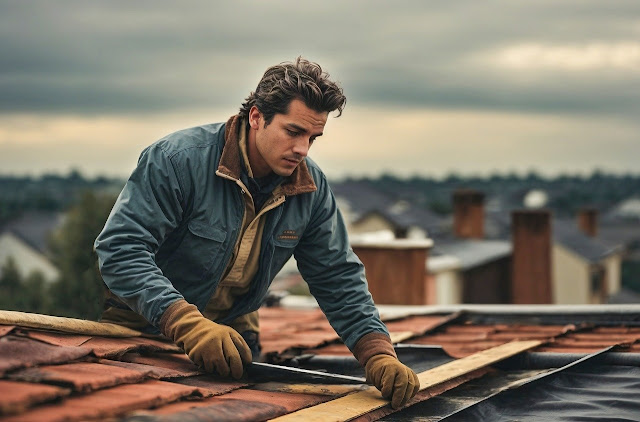Mastering the Art of Roof Repairs: Essential Skills and Expert Knowledge
February 12, 2024Introduction
Home maintenance can be an intimidating task, thrown into sharp relief when the ceiling above your head gets damaged. Roof repairs can be particular daunting – a mysterious task that's out of sight for many homeowners. This makes understanding and tackling roofing damage an elusive beast, prone to shrugged shoulders and procrastination. However, by arming yourself with necessary skills and knowledge about roof repairs, you can navigate this challenge efficiently. This comprehensive guide aims to equip homeowners with the crucial basics of roof repair, delve into the symptoms of roof damage, demystify do-it-yourself (DIY) skills, and offer guidelines when professional help needs to be called in.
Understanding The Basics: Roofing Materials and Their Lifecycle
A crucial aspect of mastering roof repairs is coming to grips with the array of roofing materials available in the market. Familiarity with these materials and their respective lifespans can make the difference between effective maintenance and unnecessary expense. Traditional roofing materials include asphalt shingles, boasting an average lifespan of 20 years, and known for their affordability and easy installation process. Metal roofs, while pricier, offer long-term feasibility with a lifespan that typically exceeds 50 years.
Each roofing material, however, comes with its lifespan and peculiar signs of wear and tear. For instance, curling or broken asphalt shingles can suggest weather-induced damage, while rust spots on your metal roof may indicate a need for maintenance or replacement. Understanding these signs for different materials is key to effective intervention and protection of your home.
Identifying Roof Damage: Key Signs and Symptoms to Look out for
Early detection of roofing damage can save homeowners expensive repairs down the line. This calls for vigilance and a keen eye for signs that something might be amiss. Repeated leaks in your attic after heavy rain, for example, might mean your roof has lost its waterproofing properties or cracks have developed.
Similarly, missing or damaged shingles can expose your roof to water seepage and undue wear and tear. Vigilance is also necessary for fungal growth on your roof, often signalled by dark patches. These signs might indicate that it’s time to roll up your sleeves for some roof repair, or call in a professional if the damage seems extensive.
Donning the DIY Hat: Essential Skills for Roof Repairs
DIY roof repairs can feel like a daunting challenge, but with a blend of preparation, the right tools, and attention to safety, it can be a manageable task. Understanding your roof layout, for example, is a crucial skill that can protect you from accidental falls. Basic understanding of different roofing materials and how to work with them is vital.
A toolkit that's tailored to your type of roof can make the repair process substantially smoother. For instance, sturdy ladders, hammers, pry bars, and roofing nails are essentials for every DIY enthusiast. Safety measures like wearing proper footwear and harnesses, working in good weather, and avoiding power lines are equally essential.
Key Roof Repair Tasks You Can Handle
Even for the novice homeowner, certain roof repairs tasks can be effectively managed. Simple tasks like replacing a broken tile or patching a small leak can be mastered with some guidance and patience.
For example, to repair a broken tile, you'll need to first gently remove the broken tile along with any fragments. Then, slide a matching tile into the gap, and secure it with a roof adhesive or nail. As for patching a small leak - After identifying the origin of the leak, apply a generous coat of waterproof sealant and cover it with a piece of roofing felt for added waterproofing. These simple tasks, when done right, can protect your roof from further damages.
When to Call the Professionals?
While the DIY ethos is commendable, there are instances when it's crucial to call in professionals. Extensive damage, complex roofing layouts, or tasks involving structural alterations necessitate trained professionals who can ensure your home's structural integrity. Furthermore, professional roof repairers can assess damage that might go unnoticed to the untrained eye, providing comprehensive care for your roof.
How to Choose a Roofing Contractor?
Choosing a reputable roofing contractor involves much more than comparing costs. Ensure your contractor is licensed, insured, and carries a solid reputation. Look for customer testimonials and reviews, and their professional experience. Additionally, make sure they provide a written estimate for the job, which includes specifics about the tasks needed, the materials used, and a timeline.
The Cost Factor: Understanding and Budgeting for Roof Repairs
Financial planning for roof repairs can often feel like navigating uncertain waters. Typically, the cost can range significantly depending on the extent of damage, the roofing material used, and whether you've hired a professional. Always factor in potential additional costs like the need for new insulation, structural amendments, or costs associated with dealing with mold and water damage.
Making Your Roof Last: Regular Maintenance and Upkeep Tips
Extending the life of your roof involves regular maintenance and preventative measures. Inspect your roof for damage regularly, especially post-harsh weather. Clean your gutters to prevent waterlogging and ensure there's proper ventilation to avoid moisture buildup, leading to mold and structural damage.
This comprehensive guide is designed to provide you with a strong foundation on all things roof repair. The more you equip yourself with knowledge and experience, the better prepared you'll be when faced with the often daunting task of roof repairs.





0 comments